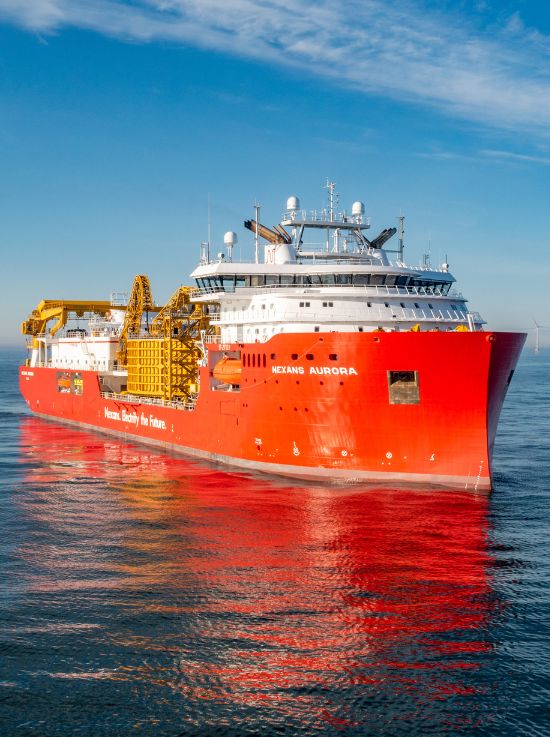Civil and military shipbuilding

Civil and military shipbuilding: focus on safety and performance
The shipbuilding sector is undergoing major changes, not only in construction techniques, but also in propulsion and navigation systems. The key purpose of this transformation is to meet global targets in carbon neutrality, but it is also impacting the stringent safety and performance requirements already applicable to the civil and military shipbuilding sectors. As pioneers in logistics solutions for the shipbuilding industry, Nexans has been present from the outset. Today, through our commitment to continuous innovation, we are maintaining our support for customers in the energy transition.
Challenges facing the civil and military shipbuilding industry
The International Maritime Organization (IMO) has set ambitious decarbonization targets for the shipping sector, in order to achieve carbon neutrality and comply with international agreements. Meeting these targets involves promoting the rapid development of clean propulsion. Substantial R&D investment and government subsidies will be necessary to support sustainable growth in this sector.
Another key ongoing issue is on-board safety. Civil and military shipbuilders need to minimize the risk of fire, plan for serious incidents and allow a minimum evacuation time during which systems must remain operational. This is no easy task, since ships have many coexisting systems. At present, diesel-powered generators are used to maintain lighting, safety devices, control units, critical systems and other equipment. In the near future, we could see other complementary solutions.
Last, the military shipbuilding industry is facing specific challenges associated with its activity. Warships carry technologies designed to increase stealth, detect the enemy faster, and support high-precision strike systems. The twin technological drivers of propulsion and power are revolutionizing warship architecture. Ships today are equipped with all-electric propulsion systems and advanced digital technologies for Big Data, communications, sensors and robotics. Unmanned drones may even contribute to the emergence of a new class of warship in the near future. All of these systems are cable-operated.
Civil and military shipbuilding is therefore facing a growing need for high-performance cables able to power its advanced systems and technologies.
Evidence
To achieve the goal of carbon neutrality by 2050, the maritime sector needs to cut emissions by 15% between 2022 and 2030.
Nexans solutions
- Contribute to on-board safety by providing reliable cables for onboard systems and components. Nexans SHIPLINK® fire-resistant MPRXCX® 331 and TCX® 331 cables are designed to maintain critical systems and services for at least three hours in the event of fire, in compliance with the recommendations of the International Maritime Organization concerning the Safe Return to Port (SRtP). This minimum period allows for orderly evacuation in the event of a problem.
- Optimize operational efficiency with flexible, lightweight solutions. Ships need to accommodate a wide range of communication, power and control systems in limited onboard space, so Nexans has developed a range of super-thin, lightweight cables specifically for the shipbuilding sector. MPRX® and MPRXCX® FLEXISHIP® cables are easy to install, with their flexible materials, easy stripping and pulling, and optimal bending radius. They are designed to reduce both costs and accident risks during installation.
- Innovate to manufacture cables able to withstand extreme weather conditions. One example is our innovative ICEFLEX™ technology, developed to withstand extreme cold. This type of cable can be used at temperatures of -50°C for projects in the Arctic. Rubber-insulated cables equipped with this technology remain supple, flexible and operational in conditions of extreme cold.
We were the first cable manufacturer to supply logistics solutions for the shipbuilding industry. Our cables and logistics solutions are tailored to customer needs. Our logistics and solutions center takes account of the specific needs of the shipbuilding industry, for example, by pre-preparing the cables. In this way, the center is gradually becoming an integral part of the customer’s value chain.

Our objectives
- Develop plug & play solutions to power on-board electrical installations and facilitate the deployment of shipbuilding projects.
- Remain at the forefront of innovation to be ready for future developments in shipbuilding.
Frequently asked questions about the shipbuilding industry
Find out more about shipbuilding and navy
Brochures :






